Wave by Iosa Massimo Ghini
If you’re an astute observer of architecture and design-and if you’re reading this blog, I know you are-chances are that at some point you’ve been deep inside the cavernous recesses of a Gothic Church, or a Venetian Palace, or perhaps the home of some cultural luminary like Martha Stewart or Steve Jobs, and mentally remarked that, “sure, all that marble is great if you’re one for stately arches or ponderous pediments, but when are they going to come up with a truly innovative use for this stuff?”
Wave. Designed by Massimo Ghini. Manufactured by Budri.
Who among us can liberate marble from the Middle Ages (and the Renaissance and the Age of Enlightenment)? Who will articulate a use for it other than festooning our countertops and vanities? Massimo Iosa Ghini, that’s who… Ghini-whose career has arced from the Milan Polytechnic Institute, to the avant garde Bolidi Group, to the renowned Kröpcke metro station in Hanover, to high-concept architecture and design projects for Ferrari, Maserati, Superga, Omnitel and, Alitalia-gave the design world a sneak peak at the future of marble this October when he showed “Wave” at this year’s Marmomacc, the International Exhibition of Stone Design and Technology. Teaming up with manufacturer Budri-Maestros of Italian Inlay, Marble, and Natural Stone for some 40 odd years-Ghini developed Wave as a propositional installation “exploring the potential of marble, not only as a surface cover but as a fluid material that fills and crosses space.” The product signs on to a trend in highly-textured and sculptural wall coverings, joining such novel numbers as (Armourcoat, B and N Iconic Panels, and Modular Arts Sculptural Panels). These products certainly have much to recommend them, but only Wave has the distinctive appeal of marble. After all, what other material is so enticingly smooth? So atavastically appealing to the crucial sense of touch? Marble invites textural exploration, a truism that Ghini and Budri are certainly relying on.
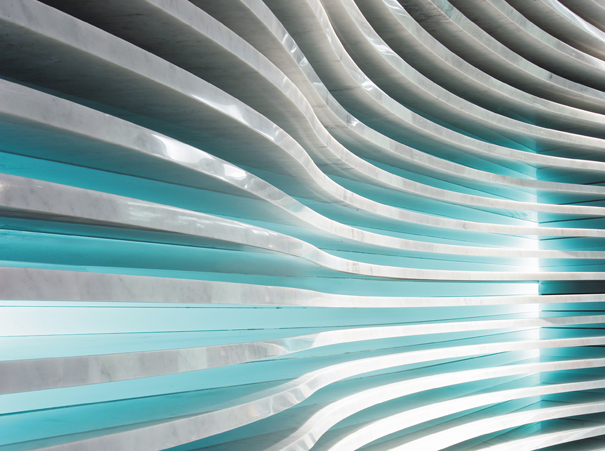
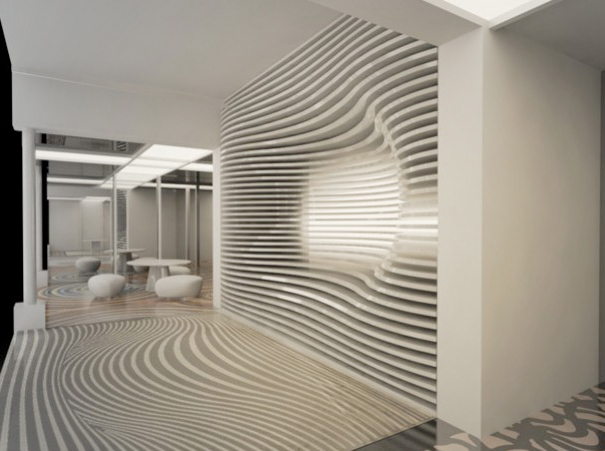
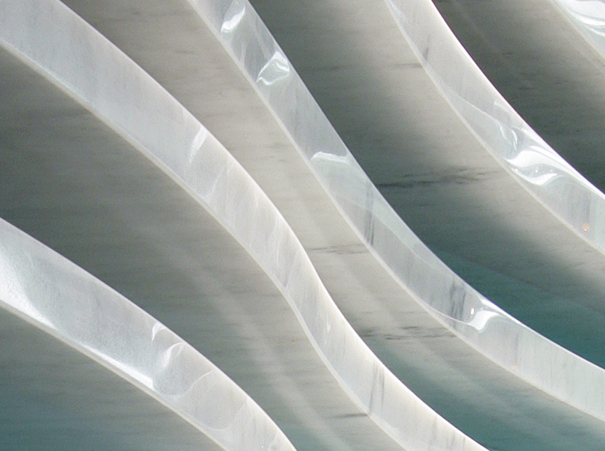
Wave is constitued of sensuous expanses of serpentine stone, cut in matching slabs and fixed length-wise on the wall’s surface, thus creating a curvaceous grid that plays with light to create games of perspective that challenge your sense of positive and negative space. Or as Ghini puts it, “the slabs create a varying surface that depends on the viewpoint … light glides across the marble surface and envelopes the observer in a surreal world between material and immaterial.” Some may point out that the defining conceptual quality of “wall” is as a barrier, an overt and tangible signifier that says “space is divided HERE.” Maybe so, but one task of contemporary design is to break down such barriers, to make us think about the shortcomings of the traditional ways we demarcate our space. As unsettling as Wave might be to some, I’m willing to go with its surreal perspectival trickery. In fact, I’ll take this one step further: as walls go, Ghini’s atypical undulations are oddly appealing.
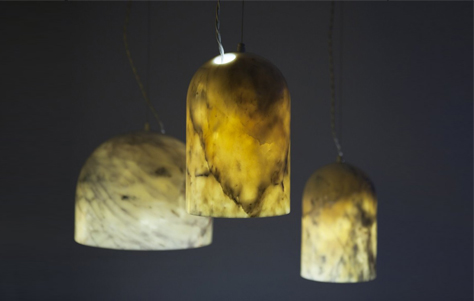
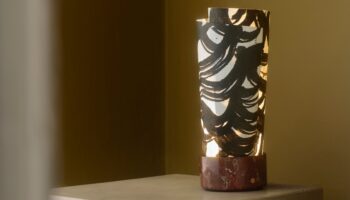
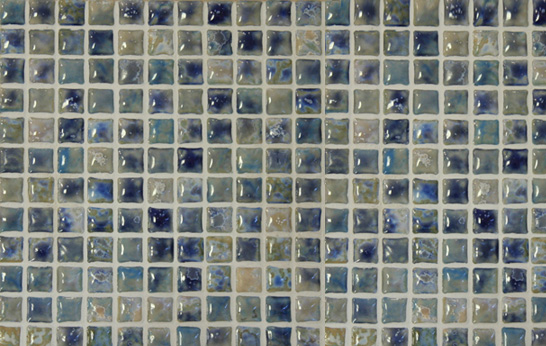

Leave a Reply